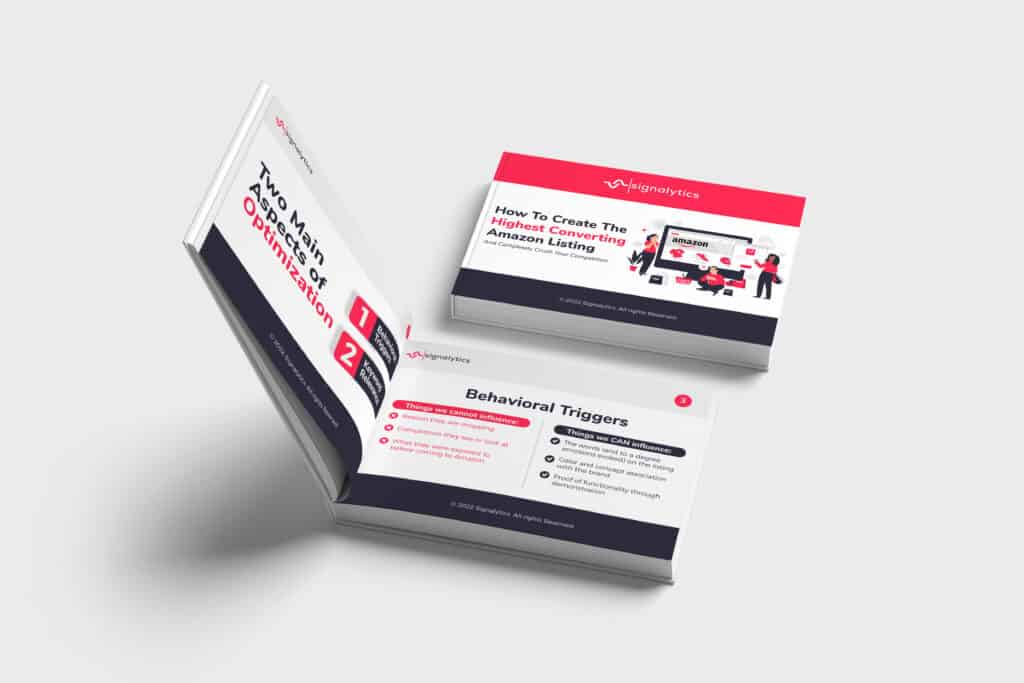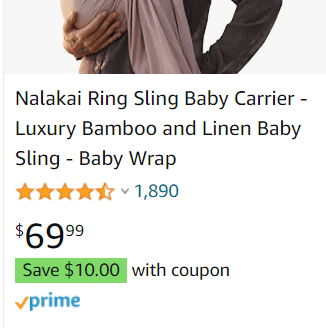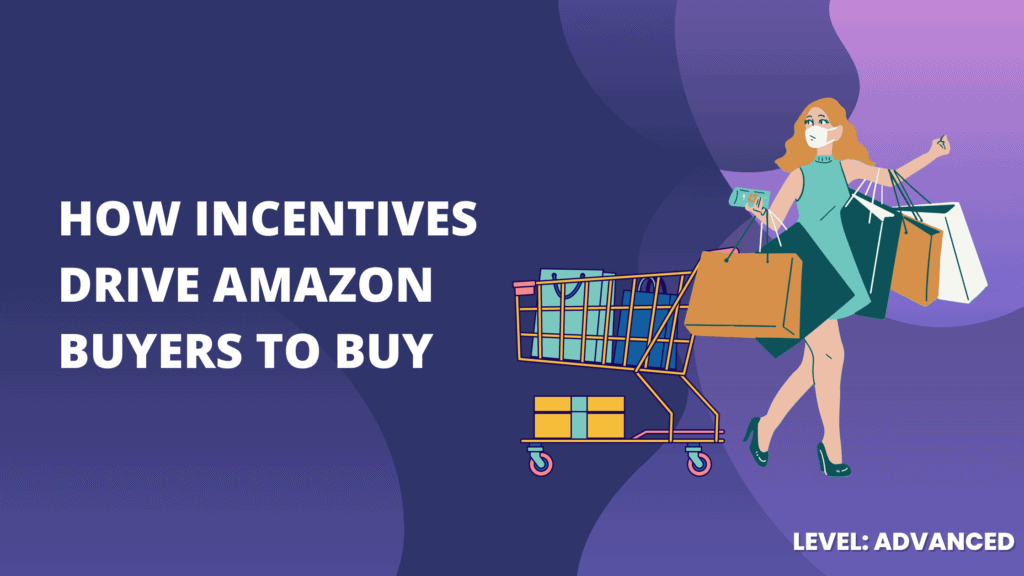And how you can capitalize on understanding this human nature.
The title of this article is a little baiting in truth, because incentives drive everyone to do…anything, basically.
As humans, we are wired to be motivated by certain things to take certain actions. To illustrate this, let’s have a conversation about incentives in general through the lens of an entire industry built on it; crypto.


Get Our Internal Amazon Listing Optimization Operating System and increase conversions by 18%+ HERE 👇
How Crypto Utilizes Incentives To Enforce “Code Is Law”
Everything in most modern societies is traditionally set up in a punitive system. That is, they are set up to punish bad behavior. This, indirectly, incentivizes good behavior as an avoidance mechanism for punishment.
The problem with this is that some people may have a greater need or desire than their fear of the punishment, or they may underestimate the impact of the punishment, or may not even have the psychological capability to see far enough into the future to believe punishment will have an impact at all.
In a code-is-law scenario, bad behavior is “punished” with the cutting off of access to rewards. Good behavior, therefore, is incentivized through rewards mechanisms. The philosophy behind this thinking is that people are inherently selfish, and will tend to do what is best for themselves before all else. As such, rewarding them for doing what they should do is a powerful incentive, and taking that away when they do bad things is more of a deterrent than potentially being entered into a penal system.
This is how blockchains keep investors moving money around and deter them from hacking systems or tipping the scales of a consensus mechanism.
It seems we, as humans, are wired to operate more optimally in a rewards system as opposed to a punishment system. The science supports this assertion as well, as was pointed out in a Psychology Today article where experiments uncovered that children respond better to rewards than punishment.
As counterintuitive as it sounds, children are on average more well behaved, and easier to manage, when they are not punished for bad behavior, but are instead rewarded for the things they do right.
So if both crypto and child rearing point to humans being more motivated to act ethically and productively when treated to rewards as opposed to being punished for bad behavior, this would indicate that humans, by nature, are motivated in every sense by incentives.
Ok. We got a little history on crypto and how children’s brains work. Neat. How does that have anything to do with e-commerce?
The Role Incentives Play On Amazon
We’ve said this many times before, but understanding the mind of your potential customer will help you increase profits. And understanding the human nature of incentives helps with just that.
See, reacting to incentives doesn’t start with gold stars and video game privileges and then end with Bitcoin and NFTs. We are talking about human nature here. Everything is about incentives. Everything.
That means that when people choose to click on your listing, there was some incentive for them to do so. When they purchase your product over a competitor’s, the incentive was somehow greater (in their eyes).
Once you start looking at your e-commerce business through that lens, you can start asking yourself the right questions.
Such as:
- What incentive do people have to search for this product/keyword?
- What incentive do people have to click on my listing?
- What incentive do people have to choose my product over competitor XYZ with a comparable item?
Answering these questions unlocks conversions, sales, and profits for your business.
Ok…how?
How To Incentivize Shoppers On Amazon
There are actually a lot of ways to incentivize potential customers online, but let’s narrow the scope to just Amazon customers for this discussion.
The reason for this is, many of the incentive structures already exist on the Amazon platform, and therefore you cannot use them to compete.
First, let’s look at the incentives that we cannot control:
- We can’t control what incentive people have to search for a keyword in the first place.
- We can’t control the incentive people have to shop on Amazon in the first place.
- We can’t control the incentive people have to stay on Amazon due to their guarantees and customer support.
What can we incentivize then?
Applying Incentive-Thinking To Your Products
What incentive does someone have to click on your listing?
This is the first question to ask. When a browsing shopper is looking for products and yours happens to cross their path, why would they click on it?
This question can be answered in two segments; Marketing and Optimization
Marketing – you can apply marketing incentives on page or on other platforms driving traffic to your listings.
- Put up a green coupon badge. Most people who buy products with money are incentivized by a deal, and since these deals are visible from the browse page, they work great.

- Run promos – coupons, discounts, bogos, etc. This is mostly an off-Amazon strategy, but if you are running ads on, say, Instagram or Tiktok, you can draw interested parties from those platforms onto your Amazon listing with a sweet enough deal.
- Free giveaways – contest, sweepstakes, etc. Much like deals, these get people interested in obtaining a free product. A lot of the traffic will come from people looking more into the item they might win in the contest, but this is good for brand awareness as well as relevance (which is boosted by external traffic).
Optimization – These are incentives that can be added or exist inherently in the way your listing is structured.
- Surprise them. People love to be surprised. This means your main image needs to stand out. You can surprise shoppers with differentiation in your packaging, in your color scheme, in your shape, or any number of things. Differentiation is a pattern interrupt, and pattern interrupts are surprising.
- Niche down. Be so specific you solve their problem or meet their desire in the first 80 characters. Meaning, call out who your product is for and be clear about what it does very specifically.
- Win badges. This is easier said than done, but Amazon choice can be won by understanding how to outperform your competitors.
- Have a high review rating and a decent amount of reviews. How many is decent? Well, Amazon recommends at least 25, but other surveys have shown the average shopper expects at least 50 to 200 reviews from a product they are considering. However, one is significantly better than zero.
What incentive does someone have to stay on your listing?
Why should they read what’s there and look at all the imagery and A+ content? Well, if you’ve set things up right, the incentive is that they’ll find what they are looking for. You can highlight this incentive by…
- Speak to them in their language. This is another copy optimization tip but it is so crucial. Read your competitor’s reviews and find out where your target customer is coming from when they consider a product like yours.
- Optimize your imagery. People are on an Amazon listing to get more details. More than that they are there to be convinced that their assumptions about what the product can do for them are right. Your images are a great place for people to become convinced that you offer the right option. This is done by making sure they are professional, clear, vibrant, and informative. Let your images tell a story and connect with your audience.
- BE SPECIFIC. Shoppers are incentivized to find a potential solution to their problem or potentially fulfill a desire. Your copy and imagery keeps them exploring that possibility. Being specific allows them to recognize that their efforts will be rewarded if you call out exactly the pain or desire they are looking to address.
That last one is no weak incentive. If, for example, I’ve been searching for a hard-case luggage bag with foam inserts for weeks, and I see you offer it, I am incentivized by the prospect that you may actually have the right size, shape, and durability I’m looking for.
What incentive do they have to buy?
Plain and simple; your product solves their problem or fulfills their desire optimally for the best price.
Every purchase is weighed in terms of value. Your product may not be the absolute BEST solution, maybe because the best solution is an industrial grade product that costs hundreds or thousands of dollars. BUT, if people have decided that the hundreds or thousands are not worth the price of the best solution, or that they cannot afford that option, then they are looking for optimally the best for the price.
Value. So, the incentive to purchase your product is the value they believe they will receive. They believe, in that moment, that there is no other product that will meet their needs as effectively for the price they are willing to pay.
This is where it ALL comes together. Words and imagery need to very specifically target this shopper, and make them feel like this solution was created for them.
Let me paint a picture. Imagine you sell a dog anxiety vest. If you just sell a small dog vest, you’ll be targeting everyone with a small dog. That’s a lot of competition. If you mention a handful of breeds in your listing, that’s probably better, but you are still competing with all the other vests that service all those breeds.
However, if you make your anxiety vest for chihuahuas only, then you narrow your demographic to only chihuahua owners. BUT, those chihuahua owners will be more hesitant to buy your competitor’s products because they are worried that the competitor’s solution wasn’t tailored specifically for their precious pooch.
Aside from specifically calling out your target audience, you also want to speak to them the way they like to communicate. That means rattle off all the features if it’s a product that involves ego. Mention feelings if it’s a product that can have emotional attachment. Focus on the specific benefit if it’s a product that solves a specific problem.
Make sure your imagery perfectly matches the message you are giving with your words.
Also, this is where reviews will be important. Not just the number and rating, but the actual content of the reviews. 60+ percent of all online shoppers claim to read reviews before making any purchase decision.
This is where post-purchase incentives come in handy.
When you offer extra gifts in the box (cookbook, small trinket, or coupon, for example), or you give customers a quick way to reach support for issues, or otherwise you display impeccable customer service, this is how you incentivize positive reviews.
And those positive reviews, in return, help incentivize purchases from new customers. That’s why the review system was so revolutionary when it came out, and why Amazon defends it so fervently.
Putting It All Together
The biggest takeaway here isn’t a revelation. It’s not some surprising hack, but instead just a new frame for how you think about your business on Amazon. It’s a peek into human nature and how you can use that to be more mindful about your presence on the platform.
How are you incentivizing your future customers? How are you making it worth their time to receive your message in a sea of other options? Always consider the incentives; yours and your competitors, as well as Amazon’s and the world’s at large. Then you can understand your audience enough to give them what they want, and scale your brand.
If you need help with these concepts, consider Signalytics’ professional optimization services. Our team will give your listing a free audit with no strings attached, and you can learn which incentives are strong and which need work.
Schedule your free listing audit here: https://signalytics.ai/listing-audit/

